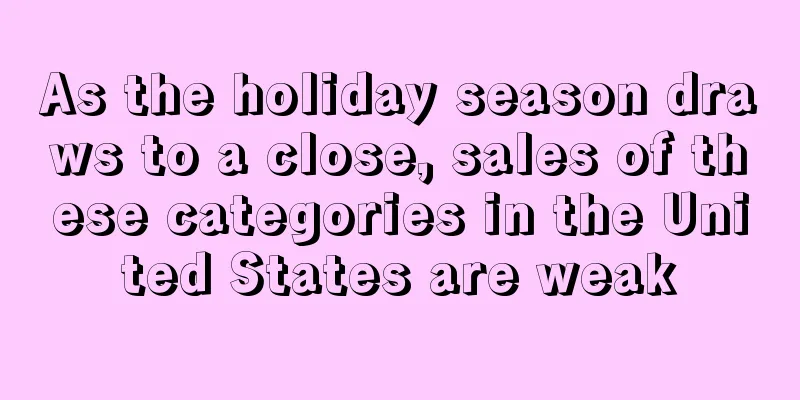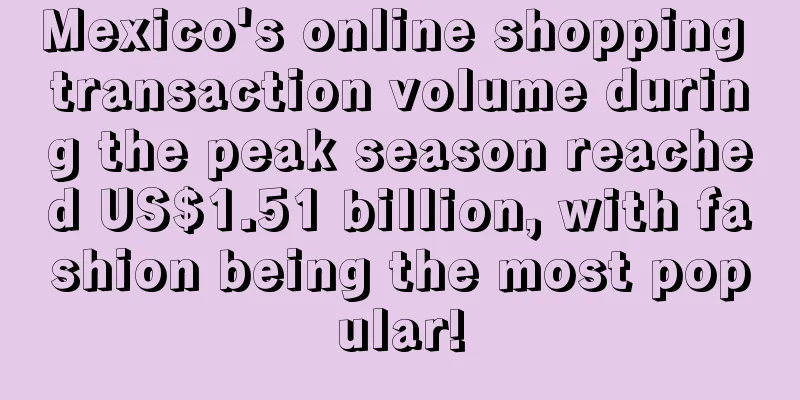As the holiday season draws to a close, sales of these categories in the United States are weak

|
After rising for four straight months , consumer spending on apparel and footwear fell 4.2% to $500.74 billion in December , according to new data from the U.S. Bureau of Economic Analysis (BEA) .
On the other hand , consumers spent $503.87 billion on furniture and home appliances in December , also down 3.9% from November .
Jack Kleinhenz, chief economist of the National Retail Federation, said : "Although high employment and wage growth, as well as savings accumulated during the epidemic , have supported this year 's holiday consumption , consumers have also been squeezed by inflation and interest rates. In addition, since consumers began shopping in advance in October this year , sales data at the end of the year are under great pressure . " It is understood that Americans' personal savings rate reached an all-time high during the epidemic, as many people working from home saved on daily commuting costs and other expenses and benefited from consumption subsidies issued by the government .
But currently, the savings rate of American households is 2.4%, the lowest level since 2005.
In addition to clothing and footwear, American consumers have also recently been downgrading their alcohol consumption.
After years of growth, sales of high-end wine and spirits are beginning to slow, and consumers are now turning to cheaper brands in search of better value, according to The Wall Street Journal.
The report cites Nielsen data analyzed by beverage industry consulting firm Bump Williams Consulting Co., which shows that sales of "premium" spirits sold in U.S. retail stores fell 3.7% in the 48 weeks ending Dec. 3, compared with a 4% increase last year.
Sales growth for premium spirits — such as $50 bottles of tequila — slowed to 2% this year after climbing 24% last year, according to the report.
The report also noted that online alcohol seller Drizly announced a surge in sales of low-end white wine brand Prosecco as consumers began looking for cheaper alternatives to Champagne.
In any case, it can be seen that in the face of inflation, consumers are increasingly turning to lower-cost brands and retailers, which is an opportunity for some small and medium-sized sellers. In today's world where consumers do not look at brands but only at cost performance, sellers who can offer lower prices may win more market share in the future. USA Category |
>>: 200+ sellers’ goods were detained, and the freight forwarder was fined over 10 million
Recommend
What is Yao Tian Xia Group? Yao Tian Xia Group Review, Features
Yaotianxia Group (Shenzhen Yaotianxia Intellectual...
Amazon Europe has new rules for clothing; eBay releases seller protection measures
Amazon Europe will update the requirements for cl...
What is material kitchen? material kitchen Review, Features
Material Kitchen specializes in beautifully design...
British e-commerce company ASOS acquires four Arcadia brands for £265 million
It is reported that British online fashion retail...
What is MultiParcels? MultiParcels Review, Features
<span data-docs-delta="[[20,{"gallery"...
A surge of 638%! Foldable phones are popular in the Indian market
In recent years, the functions of smartphones hav...
What is Hezhongxing Logistics? Hezhongxing Logistics Review, Features
Sichuan Hezhongxing International Logistics Co., L...
What is The Warehouse? The Warehouse Review, Features
The Warehouse is a warehouse-style grocery superma...
AliExpress opens the overseas sales channel for cat and dog food!
Cat food and dog food can finally be shipped over...
Awesome! Another cross-border company received nearly 100 million yuan in Series C financing
In recent years, the pet supplies market has cont...
More than 650 Novosibirsk companies joined eBay platform, winning 91,972 orders
According to the Ministry of Industry and Trade o...
What is americanas? americanas Review, Features
The americanas platform is a leader in the Latin ...
A new round of sweeps is coming! All sellers beware, a large number of goods have been seized...
Recently, a ship stranded in the Suez Canal succe...
What is Jiakesheng Logistics? Jiakesheng Logistics Review, Features
Jiakesheng Logistics has been committed to provid...
eBay gives regulators the power to remove product listings in a major crackdown on counterfeit products
eBay has given global regulators the power to tak...









